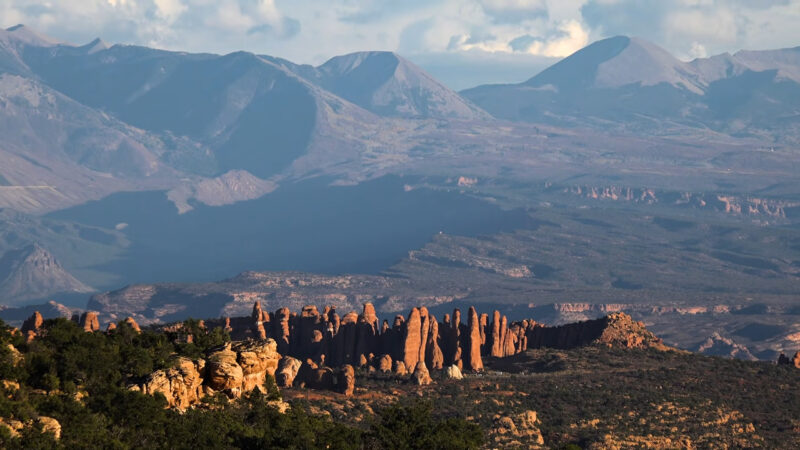Arches National Park, located in southeastern Utah, is a red rock wonderland that boasts over 2,000 natural sandstone arches. The park’s geological formations make it a must-see destination for nature enthusiasts, photographers, and hikers.
Timing your visit is crucial to making the most of the experience.
The changing seasons dramatically affect the park’s landscape, visitor traffic, and overall atmosphere, making it important to plan accordingly.
Today, we will explore the best times to visit and how to maximize your time at Arches National Park.
Peak and Off-Peak Visit Considerations
Arches National Park experiences varying levels of visitor traffic throughout the year, with distinct peak and off-peak seasons
During peak times, particularly from March to October, the park sees an influx of visitors, especially around holidays, requiring advanced reservations and strategic timing to avoid the crowds.
Nevertheless, this season is widely considered to be the best one for a visit.
In contrast, the off-peak months of winter and late fall offer a more peaceful and serene experience, though colder weather and shorter days necessitate extra preparation.

Peak Times (March to October)
Visiting during peak times, particularly from March through October, requires more advanced planning.
The park is especially busy around holidays like Easter, Memorial Day, Labor Day, and the Utah Education Association (UEA) break.
During these months, Arches National Park implements a timed entry system from April 1 to October 31 to manage the influx of visitors.
You’ll need to reserve your timed entry tickets up to three months in advance, which can require careful planning to secure a spot.
Crowds are particularly heavy in April, May, and September, so it’s crucial to arrive early or late in the day to avoid the peak congestion at popular sites such as Delicate Arch and the Windows Section.
Off-Peak Times (Winter and Late Fall)
For those seeking a more tranquil experience, the off-peak months of winter and late fall offer the best opportunity to enjoy the park’s beauty with fewer crowds.
Winter visitors won’t need to worry about timed entry tickets, and you can often explore the park with long stretches of solitude.
The shorter daylight hours and cold temperatures mean you’ll need to plan your excursions carefully, with ample warm clothing and a flexible itinerary in case of snow or ice.
The serenity of the winter landscape, coupled with fewer visitors, makes off-peak travel an excellent option for those willing to brave the cold.
Visiting During Different Seasons
Now let us talk about the different seasons, and what you can expect when visiting during them.
Winter (December to February)
Winter offers a magical, serene experience at Arches National Park. With visitor numbers significantly lower, you’ll find solitude among the towering sandstone arches, some of which are dusted with snow, providing a stark contrast to the red rock formations.
Temperatures range between 30°F and 50°F, making it essential to dress in layers and prepare for the cold. Icy conditions are not uncommon, so hikers should exercise caution, especially on more treacherous trails.
However, the winter landscape offers fantastic photo opportunities with fewer interruptions from fellow visitors.
If you’re seeking a peaceful experience with a unique winter backdrop, this is an ideal time to visit.
Spring (March to May)
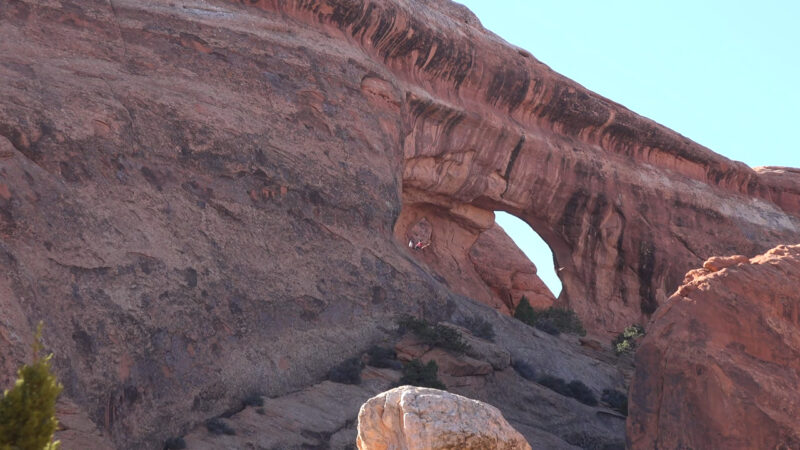
Spring is one of the most popular times to visit Arches National Park, thanks to its mild weather and blooming wildflowers.
With temperatures ranging from 70°F to 80°F, spring offers perfect hiking conditions and longer daylight hours for exploration.
However, April and May see an uptick in visitors as the weather becomes increasingly favorable. Spring storms are possible, and evenings can still be chilly, so it’s important to pack appropriately.
The bursts of color from wildflowers against the park’s iconic red rock provide a stunning contrast, making this season a favorite for photographers and nature lovers alike.
You should know that this is the best time to visit the Zion National Park.
Summer (June to August)
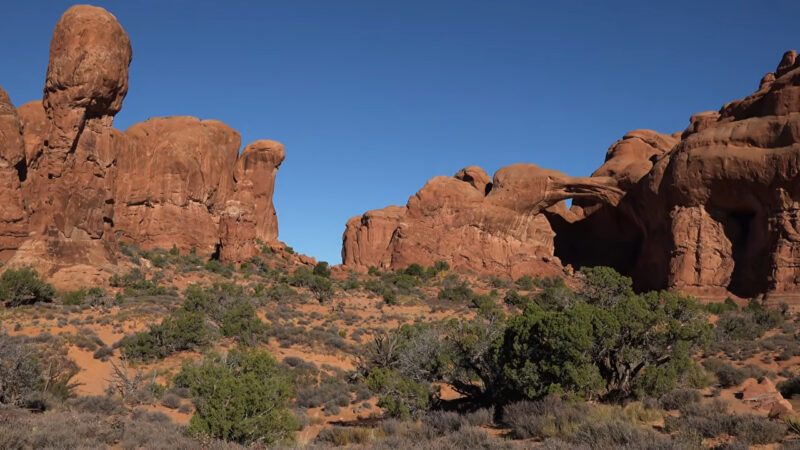
Summer is the park’s hottest and busiest season. Temperatures regularly exceed 100°F, and crowds swell, especially around midday.
To make the most of a summer visit, it’s best to explore early in the morning or later in the afternoon when the sun is lower and the heat more bearable. Hydration and sun protection are essential, as the desert environment can be unforgiving.
Despite the heat, summer also offers opportunities for water-based activities, such as rafting on the nearby Colorado River, which can provide a refreshing break from the sun.
If you’re well-prepared for the heat, summer can still be a rewarding time to visit.
Fall (September to November)
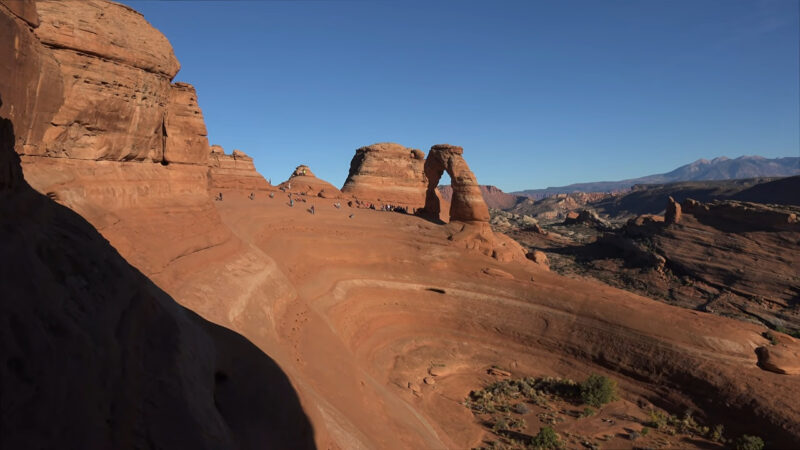
Many visitors consider fall the best time to visit Arches National Park. The temperatures are comfortable, ranging from 60°F to 80°F, and the crowds begin to thin out after Labor Day.
Fall foliage, paired with the park’s red rock formations, creates some of the most picturesque views of the year.
It is a prime time for hiking, as the weather is cooler, and the risk of thunderstorms decreases.
Evenings can be brisk, so it’s wise to bring warmer clothing. With fewer visitors and stunning vistas, fall offers a peaceful and visually rewarding experience.
Tips for Maximizing Your Visit
Do you wonder how to get the best out of visiting Arches National Park? Here are some tips you should check out.
Early Morning or Late Afternoon Visits
To avoid the harsh desert heat and the largest crowds, it’s best to visit Arches National Park either early in the morning or late in the afternoon.
These times offer softer lighting, which is ideal for photography, as well as cooler temperatures for hiking.
Early risers will find themselves virtually alone on some of the park’s most popular trails, like the Delicate Arch Trail, while sunset seekers will be rewarded with spectacular views of the arches glowing in the fading light.
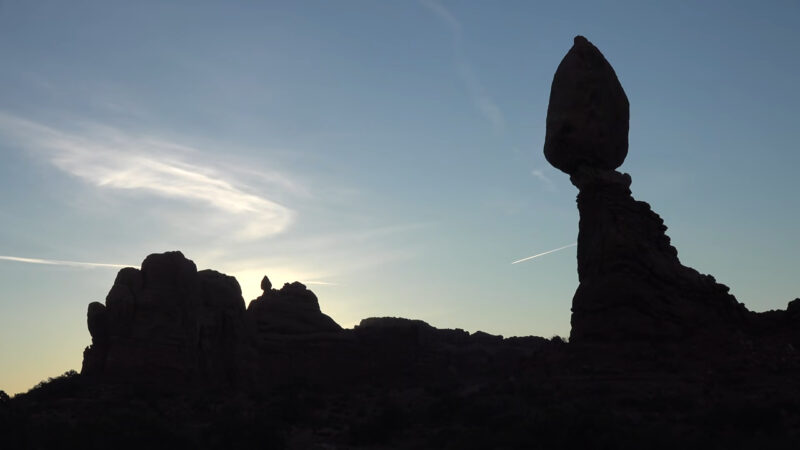
Planning Ahead
Arches National Park’s popularity means that planning is essential, especially during peak season.
Timed entry tickets are required from April 1 to October 31, and reservations should be made at least three months in advance. Checking the weather forecast is also important, as conditions can change rapidly.
Be prepared for everything from extreme heat in the summer to potential flash floods in the spring. Proper gear, such as sturdy shoes, sun protection, and plenty of water, is a must for a safe and enjoyable experience.
Safety Precautions
Arches National Park is a remote desert environment, and visitors must be prepared for its challenges. Carry plenty of water, even during cooler months, as the dry climate can quickly lead to dehydration.
Wearing appropriate clothing and footwear is crucial, especially if you plan to hike more challenging trails. Be mindful of weather conditions, such as flash floods or icy paths, which can make hiking dangerous.
It’s also essential to have a map and know the park’s rules and regulations to ensure a safe and respectful visit.
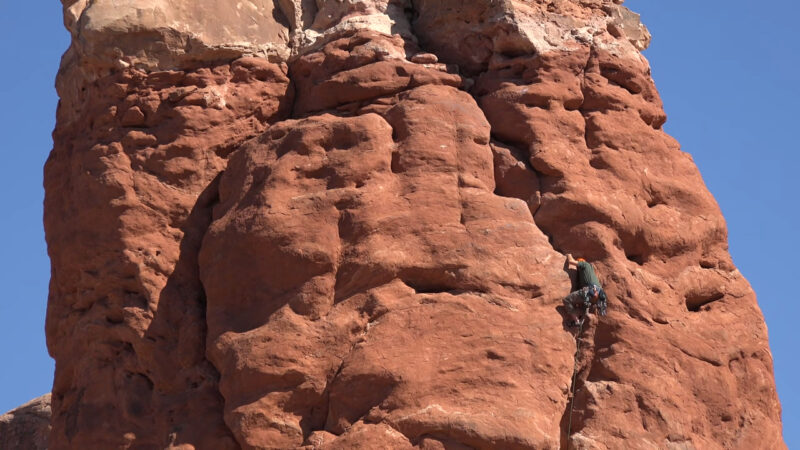
The Bottom Line
For the best balance of pleasant weather and fewer crowds, the ideal months to visit Arches National Park are April through May and September through October.
However, each season offers its charm and experience, making the park a worthwhile destination year-round.
No matter when you go, you’ll be treated to breathtaking natural beauty.

